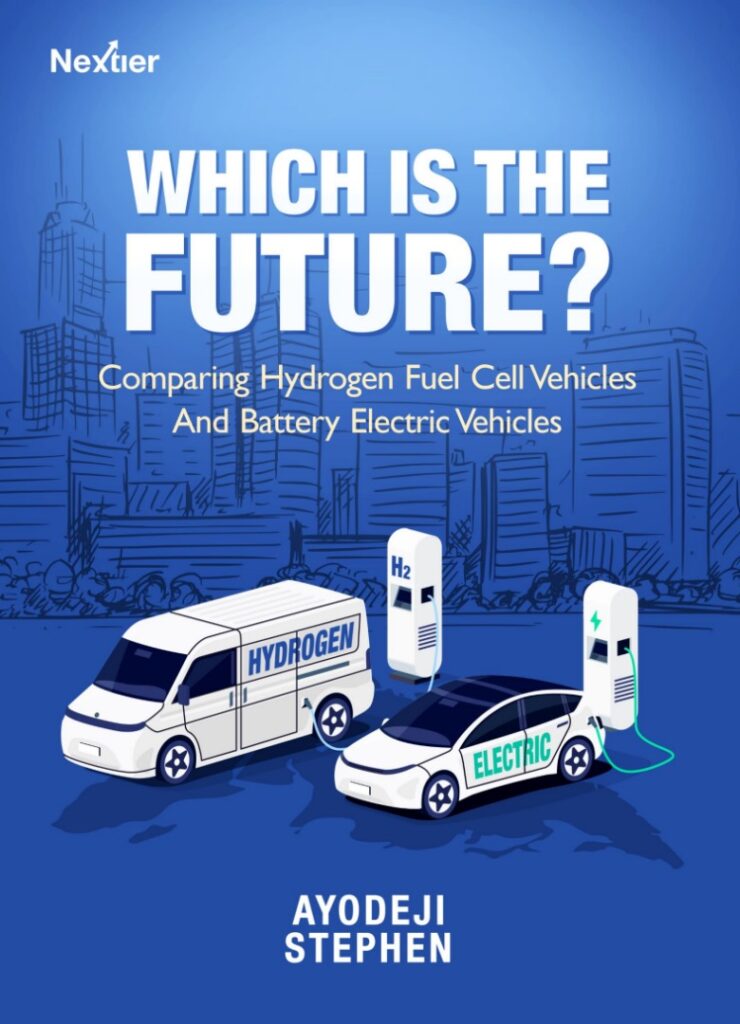
In recent years, there has been increasing interest and investment in alternative fuel vehicles to reduce greenhouse gas emissions and combat climate change. As alternatives to fossil fuels, it’s essential to recognise the significance of Battery Electric Vehicles (EVs) and Hydrogen Fuel Cell Vehicles (HFCVs) in transforming the transportation sector. As a major consumer of global oil resources, the transportation sector is undergoing a focal shift driven by the need for energy security and carbon neutrality. BEVs and HFCVs rely on renewable energy sources, integral to addressing our energy security concerns. Rather than merely switching from one non-renewable source to another, these vehicles introduce virtually inexhaustible energy options. In the pursuit of carbon neutrality, both BEVs and HFCVs play an essential role by producing zero tailpipe emissions. However, their carbon neutrality depends on how the electricity or hydrogen fuel is generated. Both technologies offer unique advantages and challenges, but which will ultimately be the future of transportation?
HFCVs use hydrogen gas as a fuel source and change it into electricity through a chemical reaction with oxygen in the air. The only emission from this process is water vapour, making HFCVs zero-emission vehicles. On the other hand, battery electric vehicles use power stored in a battery to power an electric motor, producing no emissions at the tailpipe. Both technologies offer drastic reductions in greenhouse gas emissions compared to gasoline-powered vehicles. Still, their overall environmental impact depends on how the hydrogen or electricity used to power them is produced. One of the main advantages of HFCVs is their fast refuelling time, which is comparable to refuelling a gasoline-powered vehicle. This eradicates the range anxiety associated with BEVs, which typically require longer charging times and have a limited driving range. Additionally, HFCVs have a higher energy density than batteries, which allows more energy storage in a smaller space and achieves longer driving ranges.
However, hydrogen fuel cell vehicles face significant challenges in terms of infrastructure and cost. The infrastructure for producing, storing, and distributing hydrogen gas is still underdeveloped and costly. The cost of HFCV technology is also higher compared to BEVs, making HFCVs less accessible to the general public. Additionally, producing hydrogen gas using electrolysis or steam reforming can be energy-intensive and dependent on fossil fuels, undermining the environmental benefits of HFCVs. Battery electric vehicles, on the other hand, have made significant advancements in range, performance, and affordability in recent years. The rapidly expanding charging infrastructure, coupled with advancements in battery technology, has helped alleviate range anxiety and increase the adoption of BEVs. The decreasing cost of batteries and the availability of government incentives have also made electric vehicles more affordable for consumers.
Battery electric vehicles (BEVs) and Hydrogen Fuel Cell Electric Vehicles (FCEVs) are often seen as competitors. Contrary to this assumption, both technologies can effectively cater to different consumer interests, allowing widespread adoption. BEVs leverage the existing electrical grid and prove highly efficient and economical for urban use. On the other hand, HFCVs excel in larger vehicles, long-distance travel, and for individuals without home charging facilities. Notably, both EV types eliminate reliance on fossil fuels and drastically reduce greenhouse gas emissions compared to traditional gasoline and diesel vehicles.
The sales of plug-in electric vehicles have witnessed a robust initiation, benefiting from the established electricity infrastructure and a growing network of public charging stations. In contrast, HFCVs have only recently entered the consumer market in select regions, facing limitations in refuelling infrastructure.
In conclusion, predicting the dominant vehicle technology for the future is still too early. With over 15 million new cars and trucks sold in the United States in 2013, a substantial market segment exists to embrace both technologies. However, ensuring comprehensive success necessitates robust state and federal policies that endorse all varieties of EVs. Ultimately, consumers stand to gain as they enjoy a diverse range of eco-friendly vehicle choices at dealerships, enabling them to steer clear of traditional gasoline refuelling requirements.
REFERENCES
Pusztai, Z., Kőrös, P., Szauter, F., & Friedler, F. (2022). Vehicle Model-Based Driving Strategy Optimization for Lightweight Vehicle. Energies, 15(10), 3631.
Heid, B., Linder, M., Orthofer, A., & Wilthaner, M. (2017). Hydrogen: The next wave for electric vehicles? McKinsey & Company. https://www.mckinsey.com/industries/automotive-and-assembly/our-insights/hydrogen-the-next-wave-for-electric-vehicles
Parikh, A., Shah, M., & Prajapati, M. (2023). Fuelling the sustainable future: a comparative analysis between battery electrical vehicles (BEV) and fuel cell electrical vehicles (FCEV). 30(20), 57236–57252. https://doi.org/10.1007/s11356-023-26241-9
Thomas, J. (2024). Electric vehicles vs hydrogen fuel cell vehicles: Comparing the benefits. Innovation News Network. https://www.innovationnewsnetwork.com/electric-vehicles-vs-hydrogen-fuel-cell-vehicles-comparing-the-benefits/
Union of Concerned Scientists. (2014). Battery Electric and Hydrogen Fuel Cell Electric Vehicles | Union of Concerned Scientists. Www.ucsusa.org. https://www.ucsusa.org/resources/battery-electric-and-hydrogen-fuel-cell-electric-vehicles
Zhang, W., Fang, X., & Sun, C. (2023). The alternative path for fossil oil: electric vehicles or hydrogen fuel cell vehicles?. Journal of Environmental Management, 341, 118019. https://www.sciencedirect.com/science/article/pii/S0301479723008071
Moghbelli, H., Ganapavarapu, K., Langari, R., & Ehsani, M. (2003). A comparative review of fuel cell vehicles (FCVs) and hybrid electric vehicles (HEVs) part I: performance and parameter characteristics, emissions, well-to-wheels efficiency and fuel economy, alternative fuels, hybridisation of FCV, and batteries for hybrid vehicles. SAE transactions, 1860-1870.